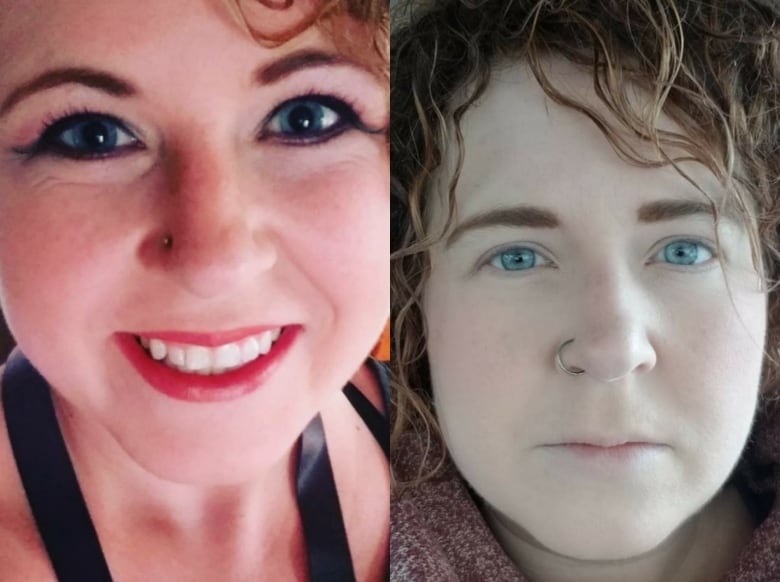
This is an opinion piece by Martha Neovard, a childbirth and infant feeding educator — and a mother of three — in southern Saskatchewan.
For more information about CBC’s Opinion section, please see the FAQ.
It’s Jan. 2. I open my eyes, slowly.
I turn off my alarm and blearily browse my phone.
My social media feeds are filled with gym selfies, photos of healthy meals and ads for weight loss.
I close my eyes and sit up slowly, bringing my feet to the side of the bed. I let the waves of dizziness and nausea wash over me and wait for my vision to stabilize before standing.
I stumble into the dresser as the room tilts suddenly and my equilibrium struggles to adjust. I make my way to the shower and stare down the white and silver occupant already taking up space there.
It’s the first week of January, but instead of hopping out of bed and steeling myself for a morning run or an intense new workout, I face down a new challenge: the shower chair.
I have been an enthusiastic resolutioner for as long as I can remember. I used to start January with a fierce determination to shed weight, get fit and hammer myself into shape.
Most years, I was successful. The pounds would melt away with whatever fad diet I’d put myself on. The strict exercise regimens would result in more muscle mass and a leaner abdomen.
But each year of putting myself through this, I’d finish out the year sicker than I’d begun it.
In 2016, I won a National Fitness Improvement Competition with my gym.
In the photos I am glowing, lean, muscular and spouting all sorts of “fitspo” about self-love and honouring my body.
I filled my Insta feed with pictures of flexing, videos of weight lifting, and plates heaped high with veggies and meat.

What all my photos neglected to show was the long hours after the gym that I spent curled on the couch, shivering and unable to get warm. They didn’t show me spontaneously passing out three to five times a week, or my inability to eat solid food before 8 p.m. without vomiting from nausea and stomach pain.
They certainly neglected to show my heart rate swinging wildly from the low 40s to 190s simply from standing upright. My hands and head shook, my fingers turned blue and my feet swelled so I couldn’t get my gym shoes back on.
I wasn’t overdoing it by any able-bodied standards, but that level of fitness, heavy weight lifting, high-intensity interval training (HIIT) workouts, and meals high in fibre and raw greens don’t work for my body.
That year of intense workouts led to me seeking a new family doctor after a month of being unable to eat solid food.
I’d already had a diagnosis of gastroparesis in 2008 and assumed it to be the root of all my symptoms.
I thought I could just “fitness” my way out of it.

My compassionate and concerned doctor sent me to a fantastic neurologist. That led to a string of specialists and tests.
In fall 2018 I found myself at the University of Calgary Autonomic Clinic under the care of Dr. Satish Raj, an electrophysiologist and global expert in dysautonomic disorders. It turned out I wasn’t lazy, as I’d always told myself. I have postural orthostatic tachycardia syndrome (POTS), an autonomic nervous system disorder that impacts every body system.
Dr. Raj also diagnosed other medical conditions that explained a lot of random injuries I’d had and the constant full-body pain I’d been pushing through.
I had beat myself up for being out of shape, even at the peak of fitness. It turns out I was battling invisible disabilities and chronic illness.
Dr. Raj wasn’t happy with my high impact, heavy weightlifting regimen. He told me in no uncertain terms that I was worsening my POTS and putting myself at risk. He provided me with a workout plan appropriate for POTS patients, along with recommendations for compression garments, high fluid and salt intake to reduce symptoms, and a list of resources for diet recommendations.

It took me two more years, a car accident, a dislocated shoulder, 13 different specialist visits and a new slew of diagnoses for me to smarten up and stop eating and working out in ways that were harmful to my body.
My New Year’s ‘unresolution’
In January 2020, I decided to make a New Year’s “unresolution.” I would spend the year learning to set boundaries for myself, and to honour and respect the body I have instead of the body I wanted.
Despite all the chaos of 2020, I did it.
I slowly acquired medical devices and aids for my invisible disabilities. I learned to speak up when I needed accommodations.
I swallowed my shame and told more people than just my closest friends and family about my illnesses.
I drank four to five litres of water a day and made my salt intake quotient of 8-10 grams a day. I loaded up my shelves with supplements, replaced weightlifting with recumbent biking and committed to eight hours of sleep a night. I gave myself permission to have rest days where I just laid on the couch or slept. I took long slow walks and sat down in public whenever my heart rate moved above 130 or my vision went out.
This all resulted in the best health year I can remember.
Finding happiness
I accomplished things I didn’t know I could.
I worked a very demanding full-time job and loved it. I found happiness again. I had energy to be present with my friends and family. I started writing again. I lifted 100 lbs (45 kilograms) with ease. I carried my children to bed. I read piles of books. I didn’t spend most days miserable, shaking and sick.
I am not going to ever be fully better, and that is OK. I now have a quality of life that I didn’t have even at my height of “fitness.”

2021 is a year to ‘just be’
In 2021, I’m continuing my new tradition of New Year’s unresolutions. This year, my unresolution is “just be.” Be what I am, in the body I have, and be unashamed of it.
I used my shower chair this morning. It took me a year to work up the courage to accept my need for it.
As I write this article, I’m wearing my compression gloves, wrapped in my heating blanket and sipping my morning cup of salty chicken broth. It’s 2021, and I’m honouring being me, in this body, with all its strengths and limitations. I am about to hit send and share my personal health experiences very publicly, something I have never done before. I take a deep breath.
It’s OK, I tell myself silently. It’s OK to be me. Just be.
For more information on POTS and other dysautonomic disorders, please visit Dysautonomiainternational.org
This column is part of CBC’s Opinion section. For more information about this section, please read this editor’s blog and our FAQ.
Interested in writing for us? We accept pitches for opinion and point-of-view pieces from Saskatchewan residents who want to share their thoughts on the news of the day, issues affecting their community or who have a compelling personal story to share. No need to be a professional writer!
Read more about what we’re looking for here, then email sask-opinion-grp@cbc.ca with your idea.












